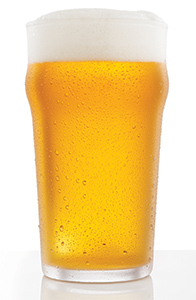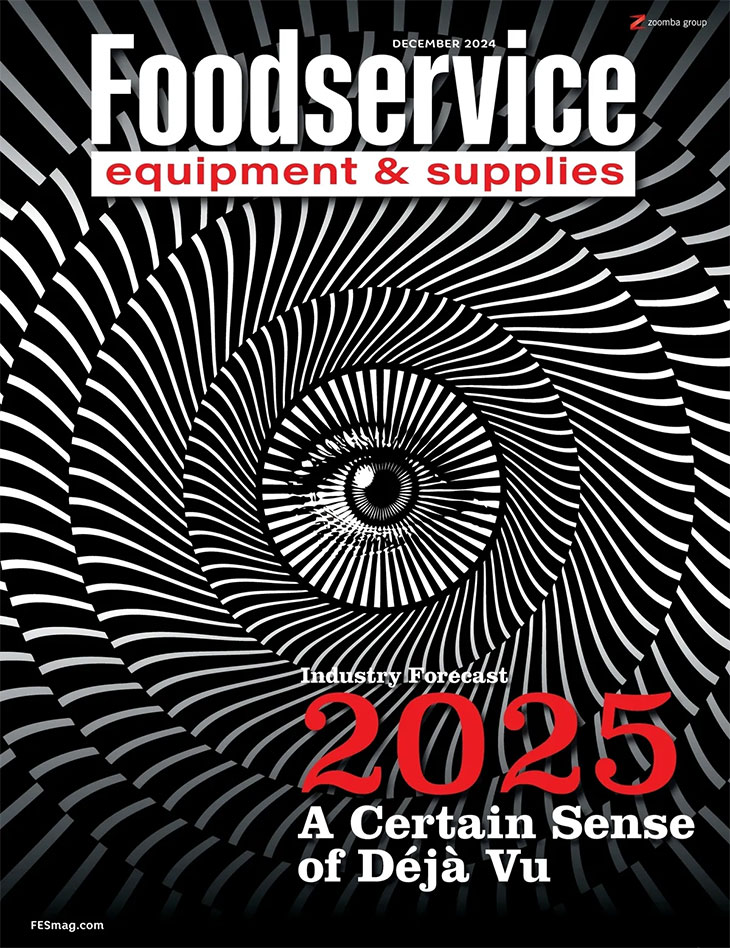Operators can choose from three basic types of commercial draft beer systems. The direct-draw type stores kegs in a refrigerated keg box under the counter or bar. This type provides a simple, retrofittable and often cost-effective alternative to long-draw systems.
 Draft beer is that which is drawn from a large container, such as a keg. Draft beer systems can handle anywhere from 1 to more than 200 different beer varieties, depending on the type and model. Today, a wider variety of keg types get used with draft beer systems due to the prevalence of microbrews and skinny quarter barrels. Operators also use these systems to dispense cocktails, kombucha, cold-brew coffee and even wine. Operators can situate kegs directly underneath beer towers or utilize beer lines running hundreds of feet from the walk-in cooler.
Draft beer is that which is drawn from a large container, such as a keg. Draft beer systems can handle anywhere from 1 to more than 200 different beer varieties, depending on the type and model. Today, a wider variety of keg types get used with draft beer systems due to the prevalence of microbrews and skinny quarter barrels. Operators also use these systems to dispense cocktails, kombucha, cold-brew coffee and even wine. Operators can situate kegs directly underneath beer towers or utilize beer lines running hundreds of feet from the walk-in cooler.
The type and size of draft beer system depends on how many beers will be on tap, the distance between the bar and kegs/cooler, and if beer will be dispensed with nitrogen. Kegs typically last 90 days and can be easily changed in and out of draft beer systems.
Types of Systems
Operators can choose from three basic types of commercial draft beer systems. The direct-draw type stores kegs in a refrigerated keg box under the counter or bar. This type provides a simple, retrofittable and often cost-effective alternative to long-draw systems.
Air-cooled or short-draw systems use the already cold air inside the beer cooler to maintain proper beer temperature all the way to the faucet. Kegerators serve as one of the simpler draft beer system options for bars. These easy-to-install, simple-to-use systems store the beer below the tap and have shorter lines, typically 25 feet in length. However, kegerators tend to be more common at low-end bars due to their affordable price, six-tap limit and the walk-in cooler space required for storing kegs. Also, because smaller keg sizes are utilized with air-cooled systems, operators need to change these more often.
Remote- or glycol-cooled draft beer systems can transport beer up to 500 feet from the keg or container to the tap. The unit’s lines are cooled to keep beer at optimum temperatures during travel. These systems require gas mixers since they cannot use straight CO2 like the direct-draw type. Nitrogenized kegs or stouts can utilize a pre-blended system that mixes 75 percent nitrogen with 25 percent CO2, while lagers and ales are best served by a ratio of 60 to 70 percent CO2 and 30 to 40 percent nitrogen.
Applications
With craft beer popularity on the rise, many bars use 12-tap units instead of kegerators to accommodate a larger variety of offerings. Operators can store beer kegs for these more comprehensive systems in a remote walk-in cooler, which helps save space in the bar area.
Twelve-tap units come in a direct-draw configuration with shorter runs and air-cooled systems or remote/glycolcooled systems, which require a tower.
There are options available to help ensure an efficient, quality pour while minimizing waste. For use with less expensive draft beer systems, per-line pressure regulators are set up in zones to help prevent excessive beer foaming. These allow bar operators to adjust the pressure for each line individually, rather than for the entire zone. Turbo taps are longer than the traditional type and extend to the bottom of a beer glass for faster pouring. Operators commonly use these in high-volume applications. Foam on Beer Prevention (FOB) systems help minimize beer waste when changing beers on tap. These systems work well with longer or remote units as FOBs prevent the line from filling with foam, which wastes product. The downside is that FOB systems can be challenging to use.
Draft beer systems offer regular tops or club tops, the latter of which holds and chills mugs.











